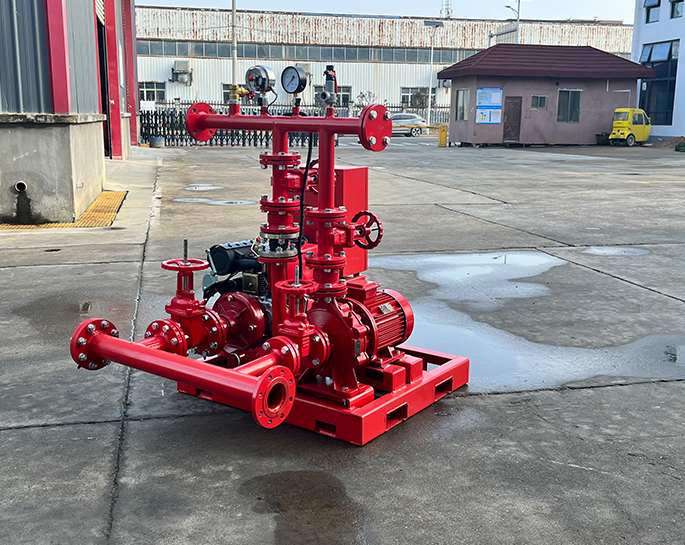Fire pump control panels are critical components of fire protection systems, and protecting them from environmental elements, such as dust and moisture, is essential to ensure their reliable operation. Here are some common methods and features used to safeguard fire pump control panels from these elements:
1. **Enclosures:**
- Fire pump control panels are housed in protective enclosures that shield them from external elements. These enclosures are typically made of materials that are resistant to corrosion, rust, and degradation caused by exposure to moisture.
2. **NEMA Ratings:**
- National Electrical Manufacturers Association (NEMA) ratings define the level of protection an electrical enclosure provides against environmental factors. Fire pump control panels often have NEMA-rated enclosures, with higher numbers indicating greater protection. For instance, NEMA 4 or NEMA 4X ratings are common for outdoor applications and offer protection against water ingress.
3. **Gaskets and Seals:**
- Seals and gaskets are installed around openings and joints in the control panel enclosure to create a barrier against moisture and dust. These components help maintain the integrity of the enclosure and prevent the entry of foreign particles.
4. **Ventilation:**
- While protection against moisture is crucial, proper ventilation is also essential to prevent the buildup of heat inside the control panel enclosure. Ventilation openings are designed to allow air circulation while minimizing the entry of dust and water.
5. **Corrosion-Resistant Materials:**
- Components and materials used in the construction of fire pump control panels are often selected for their resistance to corrosion. This is particularly important in outdoor installations where exposure to the elements is more significant.
6. **Drip Hoods and Canopies:**
- Drip hoods and canopies are extensions added to the top of the control panel enclosure to deflect rainwater away from openings and sensitive components. This helps prevent water from entering the enclosure.
7. **Climate Control Systems:**
- In some cases, climate control systems such as heaters, air conditioners, or dehumidifiers may be integrated into the control panel enclosure. These systems help maintain optimal temperature and humidity levels to prevent the formation of condensation inside the panel.
8. **Regular Inspection and Maintenance:**
- Regular inspection and maintenance procedures are essential to ensure that seals, gaskets, and other protective features remain intact and effective over time. This includes checking for signs of wear, corrosion, or damage.
9. **Installation Location:**
- Careful consideration of the installation location is crucial. Installing control panels in areas where they are less exposed to direct sunlight, heavy rain, or extreme weather conditions can contribute to their longevity.
By implementing these protective measures, fire pump control panels can withstand environmental challenges, ensuring their reliability and functionality when needed for fire protection. Regular maintenance and adherence to recommended installation practices contribute to the long-term performance of these critical components.



